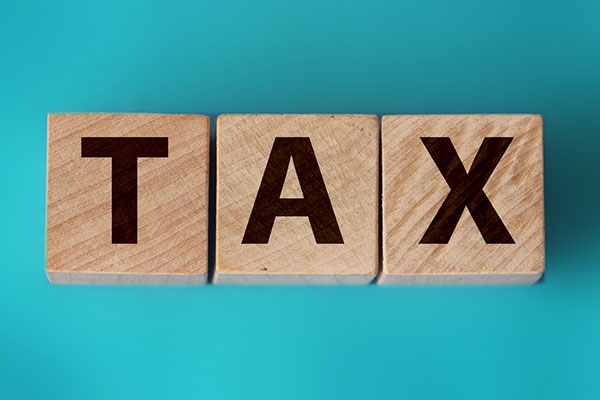Are you paying too much tax?
15th June 2022 11:14
by Katie Binns from interactive investor
Katie Binns examines how tax rebates work, why not understanding the rules costs taxpayers millions every year and why you might be paying too much tax.

Millions of pounds’ worth of tax relief is unclaimed each year because households are unaware of their eligibility for certain rebates.
Some tax refunds happen automatically when HMRC recalculates your tax bill, but most of the time you need to apply for them yourself.
These tax rebates can return hundreds or thousands of pounds to you - likely to be appreciated more than ever amid the current cost of living crisis - but there is often a significant lack of awareness about them.
Here we outline four ways you might be able to claim more tax relief.
How to claim tax relief on your SIPP
When you pay into your Self-Invested Personal Pension (SIPP), it’s your provider that will claim the basic tax relief of 20% on your behalf.
If you’re a higher-rate taxpayer then you’re also owed a further 20% tax relief, but you’ll need to claim it back yourself. If you pay £6,000 per year into your private pension, you could be owed a £2,000 rebate.
You can claim your tax back in two ways: via a self-assessment tax return or by calling or writing to HMRC if you don’t fill in a tax return.
If you’re an additional rate taxpayer (i.e. earning over £150,000 a year), you can must claim your extra 25% via a self-assessment tax return.
The money will then be paid to you personally - not into your pension.
- Read our ii SIPP customer stories
- ii Top 10...things to keep in mind when managing your own SIPP
- Pension tax relief: the secret weapon to combat inflation
How to claim working from home allowance
Workers told by their employers to hunker down at home during the pandemic in the 2020-21 and 2021-22 tax years could claim the working from home tax relief as a way to contribute to extra household costs.
A basic-rate taxpayer receives £1.20 a week in tax relief, a higher-rate taxpayer gets £2.40 a week and a top-rate taxpayer gets £2.70 a week. It means over the course of the tax year, workers reduce the tax they pay by £62.40, £124.80 or £140.40 respectively.
The good news, if you haven’t applied so far, is that the taxman is still accepting claims for the 2020-21 and 2021-22 tax years if you’re eligible. You have until 5 April 2025 to make claims for the 2020-21 tax year and until 5 April 2026 to make claims for 2021-22.
- 1.8 million taxpayers claimed working from home tax relief in 2021-22
- 10 scenarios where a tax-efficient account is your friend
If you do a self-assessment tax return, you’ll claim the working from home allowance this way. If you are an employee, you’ll apply for it via HMRC’s microservice portal. It means you will get up to two full years’ payment as a lump sum in your next salary.
And if you are still being asked by your employer to work from home - even just for one day - you can claim for 2022-23.
If this is you and you haven’t claimed the working from home relief for 2020-21 and 2021-22, that’s three years of tax rebates, meaning: basic-rate taxpayers could receive up to £187.20, higher-rate taxpayers could get as much as £374.40 and top-rate taxpayers could get up to £421.20.
Be aware that if you work from home by choice, you won’t be able to make a claim.
How do I claim tax back on Gift Aid?
Donating through Gift Aid means that charities can claim an extra 25p for every £1 they receive. And if you’re a higher-rate taxpayer you can also claim 20% tax relief on your donations. If you’re an additional rate taxpayer, you can claim an even more generous 25% tax relief on your donations.
Chancellor Rishi Sunak (pictured), for example, has urged those who don’t need the £400 energy payment to donate it to charity. A £400 donation made using Gift Aid would be worth £500 to the charity and £80 tax relief to a higher-rate taxpayer or £100 tax relief to an additional rate taxpayer.
First, you need to make a Gift Aid declaration for the charity to claim. You usually do this by filling in a form from the charity. Then you will claim the tax relief via your self-assessment tax return.

How to avoid the higher rate child benefit charge
Child benefit is £21.80 a week for a first child and £14.45 a week for additional children, but the amount is reduced for households where one earner makes more than £50,000, and tapers until the point where households with an earner on £60,000 get nothing.
Unless parents request a stop to child benefit, they are charged the high-income child benefit tax, which requires them to repay the support. This equates to 1% of child benefit for every £100 of income over £50,000. If you have an income of £60,000, you’ll have to repay the full amount.
The most obvious way to avoid this higher rate child benefit charge, if you can afford it, is to pay more into your pension - enough to take you below the crucial £50,000 threshold.
For example, imagine two parents, one earns £60,000 a year and the other £30,000, with two children. They receive £1,885 child benefit a year, but will need to repay it due to the higher rate child benefit charge.
If the highest earner makes a £8,000 pension contribution, this will automatically be grossed up to £10,000 (with basic rate tax relief), bringing their income down to £50,000 for child benefit purposes. They’ll also receive a £2,000 tax rebate through their tax return and get to keep the £1,885 child benefit.
It will only cost them £4,115 to make a £10,000 pension contribution.
These articles are provided for information purposes only. Occasionally, an opinion about whether to buy or sell a specific investment may be provided by third parties. The content is not intended to be a personal recommendation to buy or sell any financial instrument or product, or to adopt any investment strategy as it is not provided based on an assessment of your investing knowledge and experience, your financial situation or your investment objectives. The value of your investments, and the income derived from them, may go down as well as up. You may not get back all the money that you invest. The investments referred to in this article may not be suitable for all investors, and if in doubt, an investor should seek advice from a qualified investment adviser.
Full performance can be found on the company or index summary page on the interactive investor website. Simply click on the company's or index name highlighted in the article.
Important information – SIPPs are aimed at people happy to make their own investment decisions. Investment value can go up or down and you could get back less than you invest. You can normally only access the money from age 55 (57 from 2028). We recommend seeking advice from a suitably qualified financial adviser before making any decisions. Pension and tax rules depend on your circumstances and may change in future.